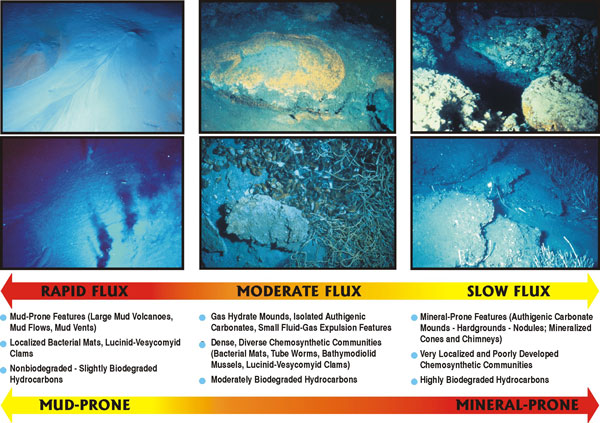

|
|
|
Completed Study Multicomponent and Multifrequency Seismic for Assessment of Fluid-Gas Expulsion Geology and Gas Hydrate Deposits: Gulf of Mexico |
|
| A wide range of fluid-gas expulsion processes is observed in seafloor strata across the northern Gulf of Mexico. These geological features can be segregated into rapid-flux processes (mud volcanoes, flows, and vents), moderate-flux processes (gas-hydrate mounds and chemosynthetic communities), and slow-flux processes (carbonate mounds, hardgrounds, and mineral-prone features). The objective of this study is to analyze shallow seafloor strata across selected deep-water expulsion sites with a range of seismic imaging options: 4-component ocean-bottom-cable (4-C OBC) data, conventional 3-D P-wave data, and deep-towed P-wave sources/receivers that produce 2 kHz and 10 kHz profiles of shallow strata in deep water. Emphasis will be placed on improving the seismic imaging of moderate-flux expulsion sites where gas hydrates exist. Improved geologic understanding of these sites is expected to be provided by high-frequency P-wave profiles that will detail structure and stratigraphy immediately below the seafloor and by converted-shear images extracted from 4-C OBC data, which will image inside P-wave wipeout zones. (Click on graphic below to enlarge.) | |
 |
|
| The study is funded by the Research Partnership to Secure Energy for America (RPSEA). The primary contractor is Louisiana State University (LSU). The Exploration Geophysics Laboratory is a subcontractor to LSU. | |
|
For
more information, please contact Bob Hardage, principal investigator.
Telephone 512-471-0300; e-mail bob.hardage@beg.utexas.edu. |